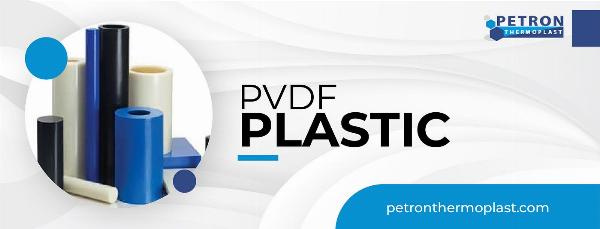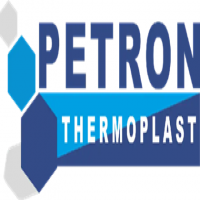PVDF PLASTIC : INDUSTRIAL GUIDE BY PETRON THERMOPLAST

Strong 8k brings an ultra-HD IPTV experience to your living room and your pocket.
Polyvinylidene Fluoride (PVDF) is a high-performance thermoplastic polymer characterized by its exceptional chemical resistance, thermal stability, and mechanical strength. PVDF is highly non-reactive and pure, making it ideal for applications that require resistance to solvents, acids, and hydrocarbons. It is commonly used in industries such as chemical processing, electronics, aerospace, and pharmaceuticals due to its durability and excellent performance in harsh environments.
PVDF Plastic
PVDF Plastic refers to any plastic material made from polyvinylidene fluoride. It retains the advantageous properties of PVDF, such as high chemical resistance, low permeability, and stability over a wide temperature range. PVDF plastic can be found in various forms, including sheets, rods, films, and molded parts, and is used to manufacture components that must endure challenging conditions.
Application of PVDF Plastic
PVDF plastic is employed in a wide range of applications, including:
Chemical Processing Equipment: Used in the fabrication of pipes, fittings, valves, and pumps that are exposed to aggressive chemicals.
Electrical and Electronics: Utilized in the production of insulating films, wires, and connectors that require high dielectric strength and thermal stability.
Medical and Pharmaceutical Devices: Employed for components that need to meet high purity and biocompatibility standards.
Food Processing Equipment: Suitable for parts that require food-grade materials with resistance to cleaning chemicals and high temperatures.
Water Treatment Systems: Implemented in the construction of membranes, filters, and other components exposed to corrosive environments.
Use Case of PVDF Plastic
Laboratory Equipment: PVDF plastic is machined into various laboratory apparatus that require high chemical resistance, such as beakers, test tube holders, and stirrers.
Semiconductor Manufacturing: Used to fabricate components that must withstand harsh chemical etching processes without contaminating the delicate semiconductor materials.
Aerospace Components: Employed in the manufacturing of parts that need to endure extreme environmental conditions while maintaining structural integrity and reliability.
Environmental Monitoring Equipment: PVDF plastic is used in the production of sensors and probes that operate in harsh environmental conditions, ensuring long-term durability and accuracy.
Industrial Machinery: Machined into bushings, bearings, and other wear-resistant parts that benefit from PVDF’s low friction and high durability properties.
Modern Engineering and PVDF Plastic
Modern engineering has utilized the unique properties of PVDF plastic to develop advanced solutions for various industries. Key advancements include:
Precision Machining: Improved machining techniques allow for the creation of intricate components with tight tolerances, enhancing the performance and reliability of PVDF plastic applications.
Enhanced Additives: The incorporation of specialized additives can further enhance the thermal stability, UV resistance, and mechanical strength of PVDF plastic, making it suitable for even more demanding applications.
Composite Materials: Engineers are developing PVDF-based composite materials that combine the benefits of PVDF with other high-performance materials to achieve superior properties for specific applications.
3D Printing: Advancements in 3D printing technology have enabled the use of PVDF in additive manufacturing, allowing for the rapid prototyping and production of complex components with high precision.
Technical Points
Chemical Resistance: PVDF plastic is resistant to most acids, bases, and solvents, making it ideal for use in aggressive chemical environments.
Thermal Stability: PVDF maintains its properties over a wide temperature range, typically from -30°C to 150°C, making it suitable for both low and high-temperature applications.
High Dielectric Strength: PVDF plastic exhibits excellent electrical insulation properties, with high dielectric strength, making it ideal for electronic and electrical applications.
Mechanical Strength: PVDF plastic has high tensile strength and impact resistance, ensuring durability and longevity in demanding applications.
Low Permeability: PVDF has low permeability to gases and liquids, which is crucial for applications requiring minimal contamination and high purity levels.
In summary, PVDF plastic is an essential material in modern engineering, offering unmatched chemical resistance, thermal stability, and mechanical strength. Its versatility and high-performance characteristics make it indispensable in a variety of critical applications across numerous industries
Note: IndiBlogHub features both user-submitted and editorial content. We do not verify third-party contributions. Read our Disclaimer and Privacy Policyfor details.


